Consort MandodariDhanyamalini | ||
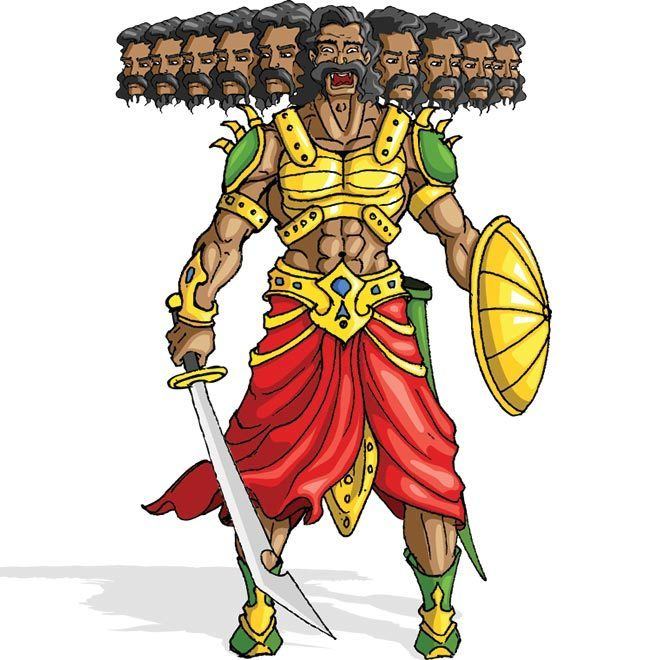 | ||
Children IndrajitAtikayaAkshayakumaraNarantakaDevantakaTrishiraPrahasta Siblings Kumbhakarna, Shurpanakha (sister), Kubera (half-brothers) Played by Similar | ||
Ravana (IAST: Rāvaṇa; /ˈrɑːvənə/; Sanskrit: रावण) is the primary antagonist in the ancient Hindu epic Ramayana where he is depicted as Rakshasa (demon) king of Lanka. Ramayana is considered by the Indian traditions to be the itihasa or the history along with Mahabharata. Ravana is the son of Virochana who is the son of Kaikasa devi and grandson of Pulastya.
Contents
- Smite god reveal ravana the demon king of lanka
- Etymology
- Iconography
- Depiction in the Ramayana
- In Buddhism
- Historicity
- Temples Related With Ravana
- Thai Versions
- Burmese Version
- Jain Version
- References
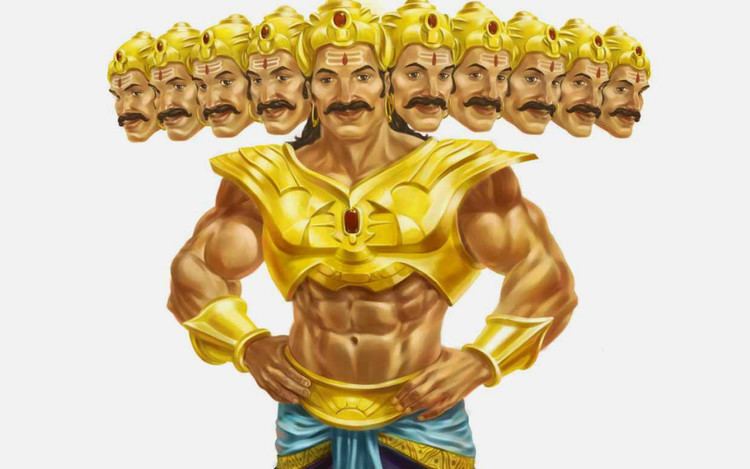
Ravana, a devotee of Lord Shiva, is depicted and described as a great scholar, a capable ruler and a maestro of the veena (plucked stringed instrument). He is also described as extremely powerful and has ten heads. His paramount ambition was to overpower and dominate the devas. His ten heads represent his knowledge of the six shastras and the four Vedas. In the Ramayana, Ravana kidnaps Rama's wife Sita to exact vengeance on Rama and his brother Lakshmana for having cut off the ears and nose of his sister Shurpanakha.
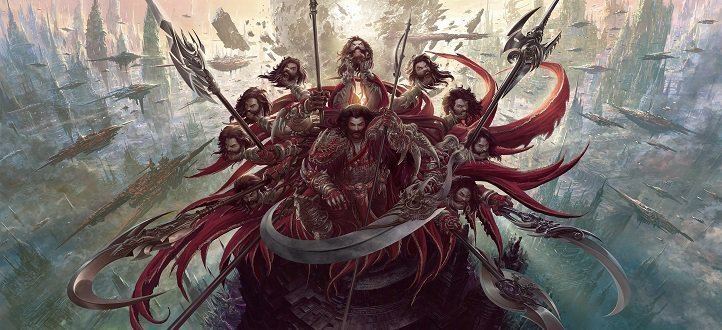
Ravana, as a practitioner of Buddhism, is a major character in Buddhist texts such as the Laṅkāvatāra Sūtra and the Gathering of Intentions, a text of the Nyingma school of Tibetan Buddhism.
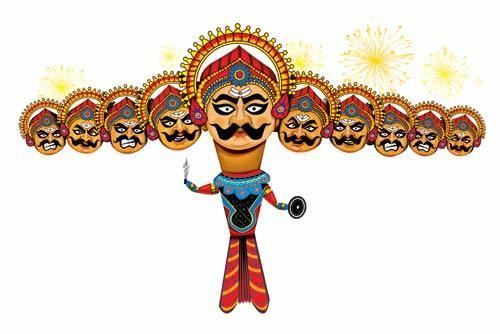
Ravana is worshipped by Hindus in some parts of India, Sri Lanka and Bali (in Indonesia.) He is considered to be the most revered devotee of Shiva. Images of Ravana are seen associated with Shiva at some places.
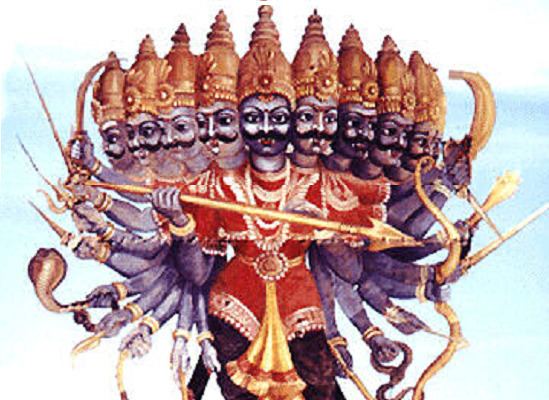
Smite god reveal ravana the demon king of lanka
Etymology
The word Rāvaṇa means roaring opposite of Vaiśravaṇa meaning "hear distinctly" (passive). Both Ravana and Vaiśravaṇa, who is popularly known as Kubera, are considered to be patronymics derived as sons of Vishrava.
According to F. E. Pargiter, the word may originally have been a Sanskritisation of Iraivan, the Tamil name for a lord or king.
Ravana has many other popular names such as Dasis Ravana, Dasis Sakvithi Maha Ravana, Dashaanan, Ravula, Lankeshwar, Lankeshwaran, Ravanaeshwaran, Eela Vendhar.
Iconography
Ravana was capable of ten things.People showed these things by giving 10 heads for his memories.But Ravana is depicted as having ten heads, although sometimes he is shown with only nine heads because he has sacrificed a head to convince Shiva. However, in some stories in Java told that every year, Ravana cuts one of his heads every year and presents it to Shiva as representative of his devotion. Each head was reflecting his desire. By cutting it and presenting it, he was sacrificing one of his many desires to appease Shiva. He kept doing it every year until the last one. Turned out the last head was considered as the true head of Ravana and Shiva considered his devoutness is a worthy one and his sacrifices were accepted. He is described as a devout follower of Shiva, a great scholar, a capable ruler and a maestro of the Veena. Ravana is also depicted as the author of the Ravana Samhita, a book on Hindu astrology, and of the Arka Prakasham, a book on Siddha medicine and treatment. Ravana possessed a thorough knowledge of Siddha and political science. He is said to have possessed the nectar of immortality, which was stored inside his belly, thanks to a celestial boon by Brahma.
Depiction in the Ramayana
Ravana was born to a great sage, Vishrava (or Vesamuni) and his wife, the daitya princess Kaikesi. People of Bisrakh village in Uttar Pradesh claim that their village was named after Vishrava and that Ravana was born there.
In Buddhism
Ravana, as a practitioner of Buddhism, is a major character in Buddhist texts such as the Laṅkāvatāra Sūtra and the Gathering of Intentions, a text of the Nyingma school of Tibetan Buddhism.
Historicity
According to Uttara Kanda section of Ramayana, the Rakshasa (also known as Raksha) clan were the mythical inhabitants of Lanka who were said to have lived among the Naga, Yaksha and Deva. They were led by Malyavana, Sumali and Sukesha of the Raksha, who were ousted by Deva with the help of Vishnu and then subsequently ruled by Ravana.
The Raksha vanish from history after their mention in the Ramayana, except in Sri Lankan folk stories. European scholars consider the story of Ravana and the Raksha to have been made in historic times, due to knowledge of Sri Lankan locations mentioned in the stories and therefore the story is considered not to be based on fact. The Mahavansa also makes no mention of a great Raskha civilisation and there is no archaeological evidence suggesting a civilisation ruled by Ravana existed.
Temples Related With Ravana
There are some Shiva temples where Ravana is worshipped.
Koneswaram temple, Dhen-Dakshina Kailasam is a classical-medieval Hindu temple complex in Trincomalee, a Hindu religious pilgrimage centre in Eastern Province, Sri Lanka. This temples is associated with Ravana and his mother. They had worshiped Shiva at the shrine.
Kanniya Hot water spring in Sri Lanka has the history from King Ravana era. It says that King Ravana stuck the earth with his sword in several spots for his mother's funeral event and several fountains were started on those places. The water was hot and it is now a tourist attraction in Sri Lanka.
The Sachora Brahmins of Gujarat claim descent from Ravana and sometimes have Ravan as their surname.
There is also reference to the Ravani lineage of Upadhyaya Yasastrata II, who was of Gautama gotra and was a son of Acharya Vasudatta, and described as born of Ravani.
Thai Versions
In Thai text, Ramakien, an epic influenced by the Ramayana, Ravana is a yaksa or a rakshasa.. In the same text sometimes Ravana is also considered an asura. The Thai names for Ravana, among others, are Rapanasur ("the Asura Ravana"), Totsapak ("One with ten faces") or., more popularly, Totsakan ("One with ten necks").
Burmese Version
Yawana or Datha-giri, in the Burmese unofficial national epic Yama Zatdaw.
Jain Version
Jain accounts vary from the traditional Hindu accounts of Ramayana. The incidents are placed at the time of the 20th Tirthankara, Munisuvrata. According to Jain version, both Rama as well as Ravana were devout Jains. Ravana was a Vidyadhara King having magical powers. Also, as per the Jain accounts, Ravana was killed by Lakshmana and not Rama.
